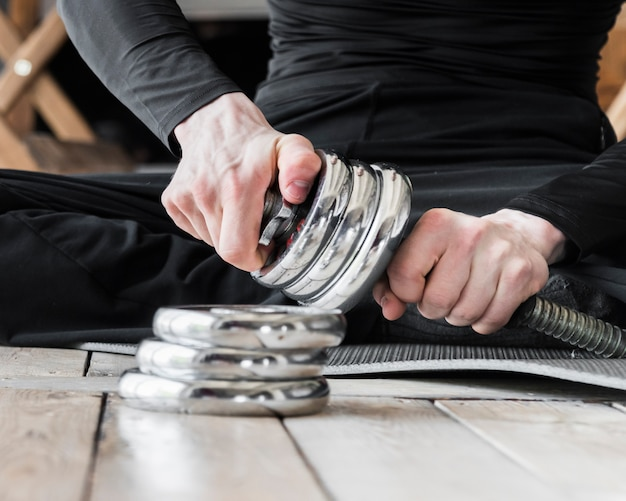Enhancing Safety and Productivity in Steel Coil Slitting with Edge Conditioning

In the manufacturing sector, particularly in steel processing, the significance of edge conditioning cannot be overstated. This process addresses the inherent challenges associated with steel coil slitting, particularly the formation of sharp burrs that can pose safety risks and hinder operational efficiency. By refining the edges of steel coils, manufacturers can not only enhance the safety of their products but also significantly boost productivity. This article delves into the various facets of edge conditioning, exploring its importance, methodologies, benefits, and applications in steel coil slitting
Understanding Edge Conditioning
Edge conditioning refers to the mechanical process of refining the edges of steel strips after they have been slit. This procedure is essential for eliminating sharp burrs that result from the slitting process. Burrs can be a significant hazard for workers and can also affect the performance of the steel in subsequent manufacturing processes.
The Importance of Edge Conditioning
- Safety Enhancement: Sharp edges can lead to injuries during handling. Edge conditioning transforms these dangerous edges into smooth, rounded profiles, reducing the risk of cuts and abrasions.
- Improved Handling: Smooth edges allow for safer and easier handling of steel products, facilitating more efficient operations on the shop floor.
- Quality Assurance: Edge conditioning contributes to the overall quality of the finished product, ensuring that steel components meet industry standards and customer expectations.
Methods of Edge Conditioning
Edge conditioning can be achieved through various techniques, including:
- Rolling: This process involves passing the steel through rollers that reshape the edges, effectively removing burrs and creating a uniform profile.
- Skiving: A cutting technique that removes material along the edge, producing a clean and precise finish.
- Deburring: This method specifically targets burrs, either through mechanical means or manual processes, to ensure a smooth edge.
The Steel Coil Slitting Process
Steel coil slitting is a critical operation in the steel industry, where large coils of steel are cut into narrower strips for various applications. While this process is efficient, it often results in sharp edges that require conditioning.
Steps in Steel Coil Slitting
- Preparation: The steel coils are inspected and prepared for slitting, ensuring they meet the necessary specifications.
- Slitting: The coils are fed into a slitting machine where rotary knives cut them into desired widths.
- Edge Conditioning: Following slitting, the edges undergo conditioning to remove burrs and create safe profiles.
Challenges in Steel Coil Slitting
- Burr Formation: The primary challenge in slitting is the creation of sharp burrs, which can affect both safety and product quality.
- Operational Efficiency: If not addressed, burrs can lead to increased downtime and operational inefficiencies.
Benefits of Edge Conditioning
Implementing edge conditioning in the steel coil slitting process yields numerous advantages that enhance both safety and productivity.
Safety Improvements
- Reduced Injury Risk: By smoothing out sharp edges, the likelihood of worker injuries decreases significantly.
- Compliance with Safety Standards: Edge conditioning helps manufacturers comply with safety regulations, protecting both employees and the organization.
Productivity Gains
- Faster Handling: Smooth edges facilitate quicker and safer handling, reducing the time spent on loading and unloading materials.
- Decreased Downtime: With fewer injuries and safer handling, the overall downtime associated with accidents and injuries is minimized.
Quality Enhancements
- Consistent Product Quality: Edge conditioning ensures that all products meet the same high standards, leading to greater customer satisfaction.
- Improved Aesthetics: Smooth edges not only enhance safety but also improve the overall appearance of the steel products.
Types of Edge Profiles
Different edge profiles can be achieved through the edge conditioning process, each serving specific applications and requirements.
Common Edge Types
- Round Edges: These edges are fully rounded, providing maximum safety for handling and exposure.
- Square Edges: Characterized by sharp corners, these edges are often used in applications where precise fitting is essential.
- Deburred Edges: These edges have had burrs removed, offering a balance between safety and functionality.
Custom Edge Profiles
Manufacturers can also request custom edge profiles tailored to specific applications, ensuring that the final product meets unique industry needs.
Applications of Edge Conditioning
Edge conditioning finds applications across various industries, highlighting its versatility and importance.
Key Industries
- Automotive: In the automotive sector, edge conditioning is crucial for parts that require precise fitting and safety.
- Construction: Steel components used in construction benefit from smooth edges, enhancing safety on job sites.
- Manufacturing: Many manufacturing processes require steel components with conditioned edges to ensure compatibility and safety.
Specific Use Cases
- Window Hardware: Smooth edges are essential for window fittings, ensuring safe installation and operation.
- Hand Tools: Tools that incorporate steel components with conditioned edges provide better user safety and performance.
The Role of Technology in Edge Conditioning
Advancements in technology have transformed the edge conditioning process, making it more efficient and effective.
Modern Equipment
- Automated Edge Conditioners: These machines streamline the conditioning process, ensuring consistent quality across large batches.
- Precision Rollers: High-precision rollers allow for more accurate shaping of edges, resulting in better product quality.
Integration with Manufacturing Systems
- Real-time Monitoring: Modern edge conditioning systems often include monitoring capabilities that track the quality of the edges in real-time.
- Data Analytics: Utilizing data analytics can help manufacturers optimize their edge conditioning processes, leading to further improvements in safety and productivity.
Cost Implications of Edge Conditioning
While edge conditioning requires an initial investment in equipment and training, the long-term benefits often outweigh these costs.
Cost-Benefit Analysis
- Reduced Injury Costs: By enhancing safety, companies can significantly lower the costs associated with workplace injuries.
- Increased Efficiency: The improved handling and reduced downtime translate into higher overall productivity, justifying the investment in edge conditioning.
Long-term Savings
- Enhanced Product Lifespan: Products with conditioned edges often have a longer lifespan, providing additional value to manufacturers.
- Customer Retention: High-quality products lead to increased customer satisfaction and loyalty, ultimately benefiting the bottom line.
Best Practices for Edge Conditioning
To maximize the benefits of edge conditioning, manufacturers should adhere to best practices.
Regular Maintenance
- Equipment Checks: Regular maintenance of edge conditioning equipment ensures optimal performance and longevity.
- Quality Control: Implementing strict quality control measures during the conditioning process can help maintain high standards.
Training and Education
- Employee Training: Ensuring that employees are well-trained in edge conditioning techniques can lead to better safety and productivity outcomes.
- Continuous Learning: Keeping staff updated on the latest technologies and methods in edge conditioning can enhance overall efficiency.
Conclusion
The integration of edge conditioning into the steel coil slitting process is essential for enhancing safety and productivity within the manufacturing sector. By focusing on the refinement of edges, manufacturers can significantly reduce workplace hazards, improve product quality, and optimize operational efficiency. As technology continues to evolve, the future of edge conditioning looks promising, with the potential for even greater advancements in safety, productivity, and quality assurance. Embracing these practices will not only benefit manufacturers but also contribute to a safer and more efficient industry overall.
This article has been structured to provide a comprehensive overview of edge conditioning in steel coil slitting, emphasizing its importance in enhancing safety and productivity. Each section is designed to be informative and engaging, ensuring readers gain valuable insights into this critical aspect of steel processing.


